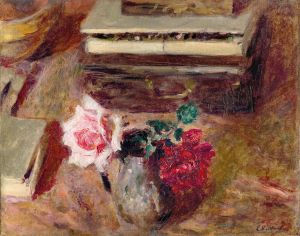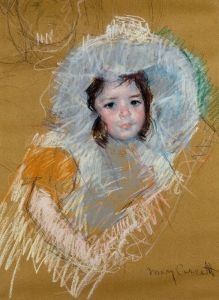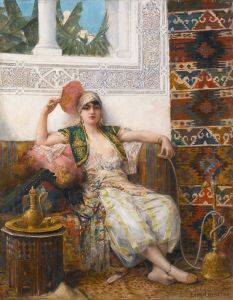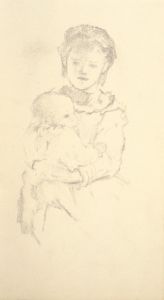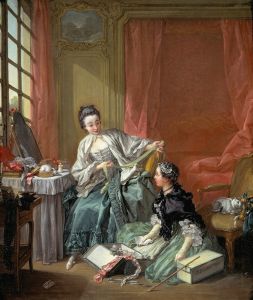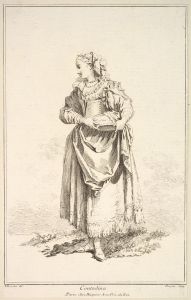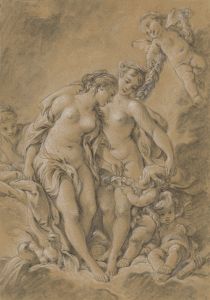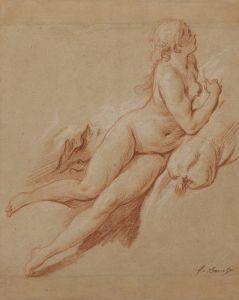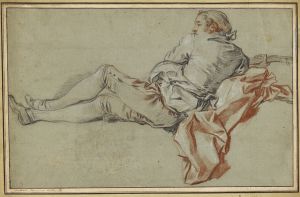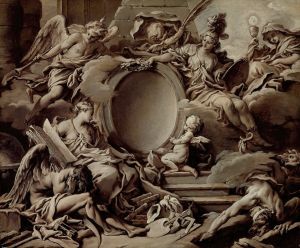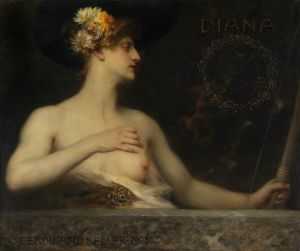
Venus
A hand-painted replica of François Boucher’s masterpiece Venus, meticulously crafted by professional artists to capture the true essence of the original. Each piece is created with museum-quality canvas and rare mineral pigments, carefully painted by experienced artists with delicate brushstrokes and rich, layered colors to perfectly recreate the texture of the original artwork. Unlike machine-printed reproductions, this hand-painted version brings the painting to life, infused with the artist’s emotions and skill in every stroke. Whether for personal collection or home decoration, it instantly elevates the artistic atmosphere of any space.
François Boucher was a prominent French painter of the Rococo style, known for his idyllic and voluptuous paintings of classical themes, decorative allegories, and pastoral scenes. Among his extensive body of work, Boucher created several paintings depicting Venus, the Roman goddess of love and beauty. These works are celebrated for their exquisite detail, vibrant colors, and the sensuous portrayal of the goddess, which was characteristic of Boucher's style.
One of Boucher's most renowned depictions of Venus is "The Toilet of Venus," completed in 1751. This painting was commissioned by Madame de Pompadour, the official chief mistress of King Louis XV of France and a great patron of the arts. Madame de Pompadour was a significant influence on Boucher's career, and her patronage helped him secure numerous prestigious commissions. "The Toilet of Venus" exemplifies Boucher's skill in rendering the soft textures of skin and fabric, as well as his ability to create a sense of intimacy and elegance.
In "The Toilet of Venus," Boucher presents Venus in a private moment, attended by cherubs as she prepares herself. The composition is rich with Rococo elements, including the use of pastel colors, intricate details, and a playful, light-hearted atmosphere. The painting captures the essence of Rococo art, which often focused on themes of love, mythology, and the pleasures of life, depicted with a sense of grace and charm.
Boucher's portrayal of Venus was not limited to a single painting. Throughout his career, he explored various interpretations of the goddess, each time emphasizing her beauty and allure. His works often included mythological narratives, where Venus was depicted in scenes from classical mythology, interacting with other deities or engaging in romantic escapades. These paintings were highly sought after by the French aristocracy, who admired Boucher's ability to blend classical themes with contemporary tastes.
Boucher's Venus paintings are notable for their technical mastery and the way they reflect the cultural and artistic values of 18th-century France. His work was instrumental in popularizing the Rococo style, which was characterized by its ornate detail, lightness, and emphasis on themes of love and nature. Boucher's influence extended beyond his lifetime, as his paintings continued to be celebrated for their beauty and artistic innovation.
In summary, François Boucher's paintings of Venus are exemplary of his Rococo style, showcasing his talent for creating visually stunning and thematically rich works. His depictions of the goddess of love remain significant in the history of art, reflecting both the artistic trends of his time and his personal artistic vision. Through his paintings, Boucher contributed to the enduring legacy of Rococo art and its celebration of beauty, sensuality, and the pleasures of life.





